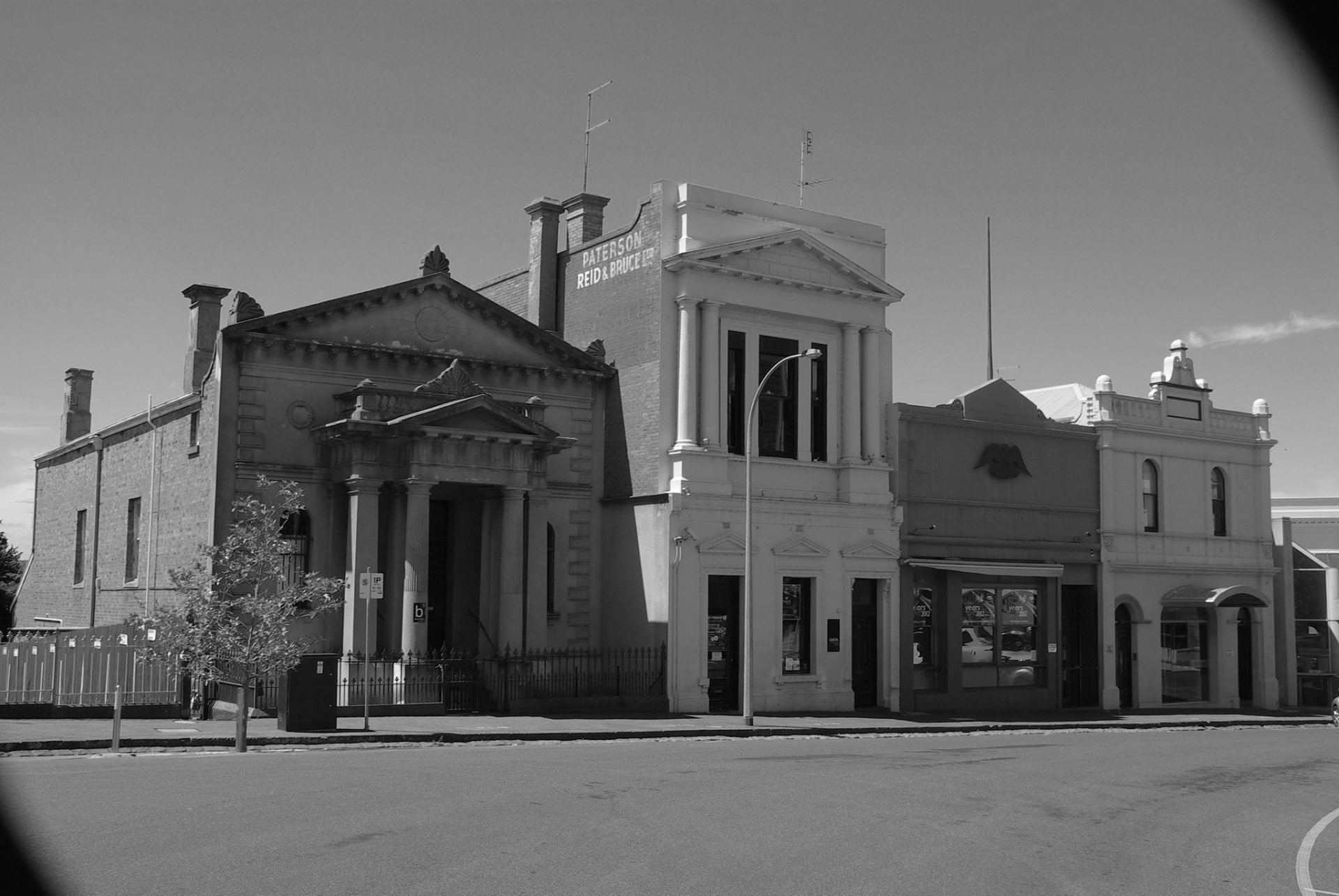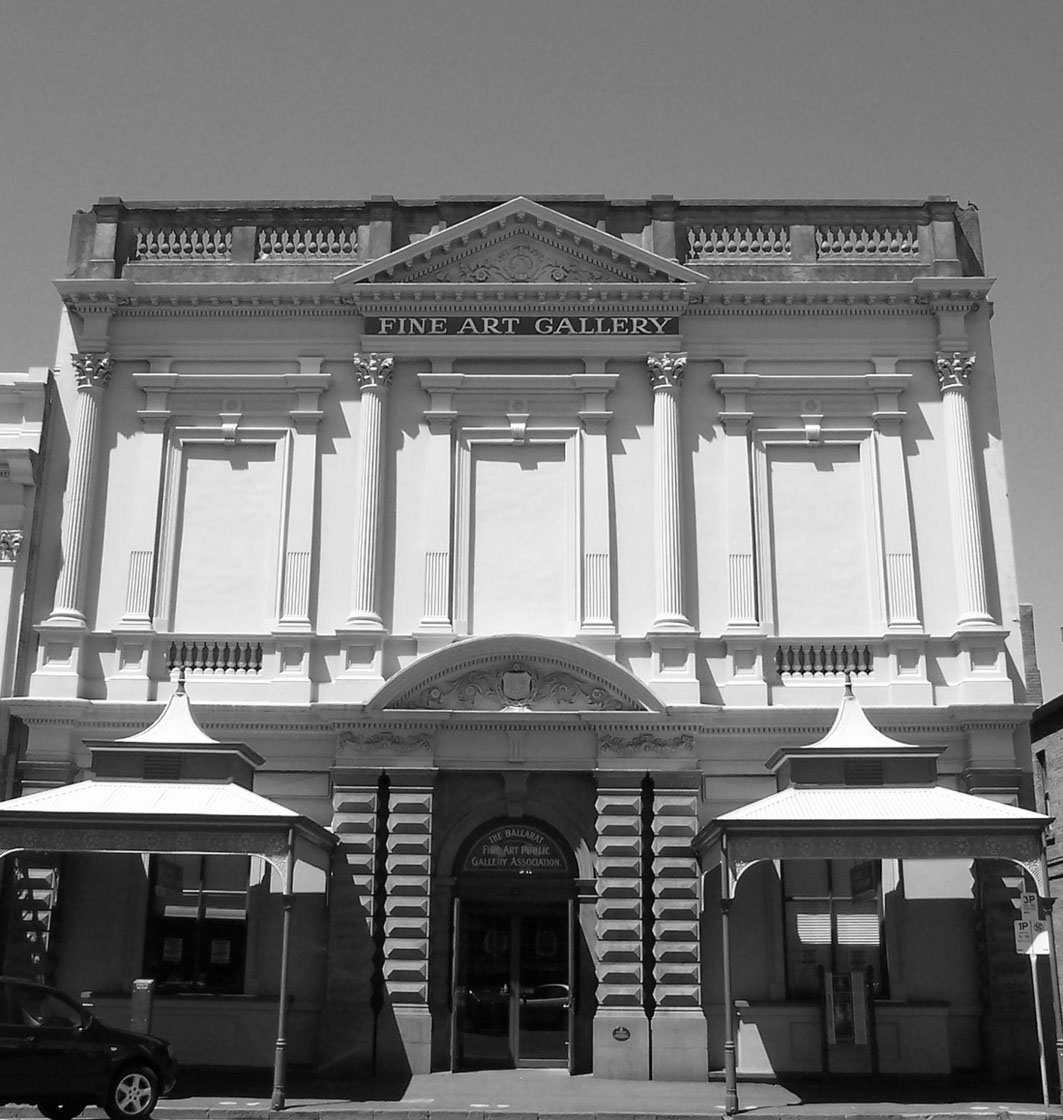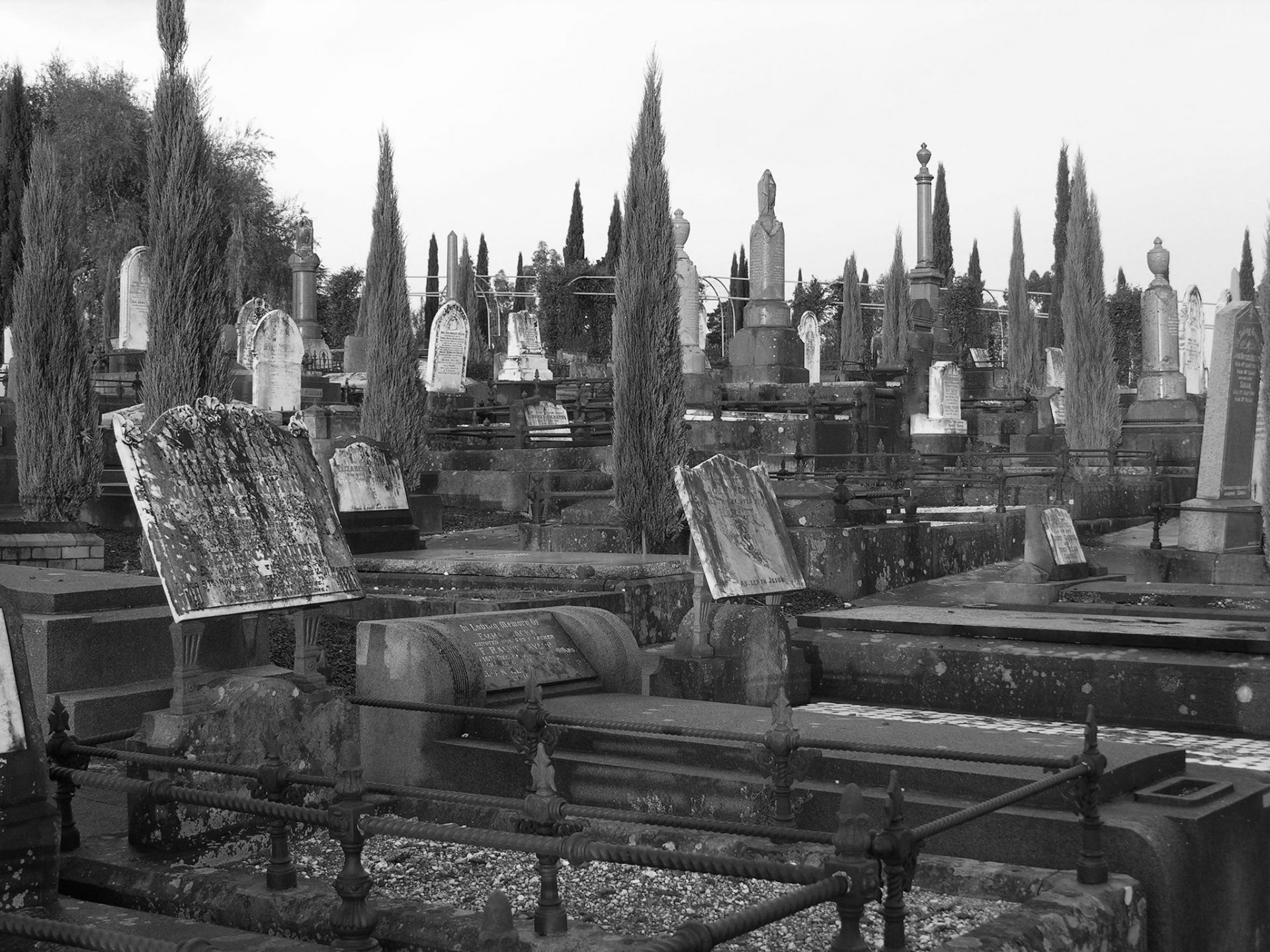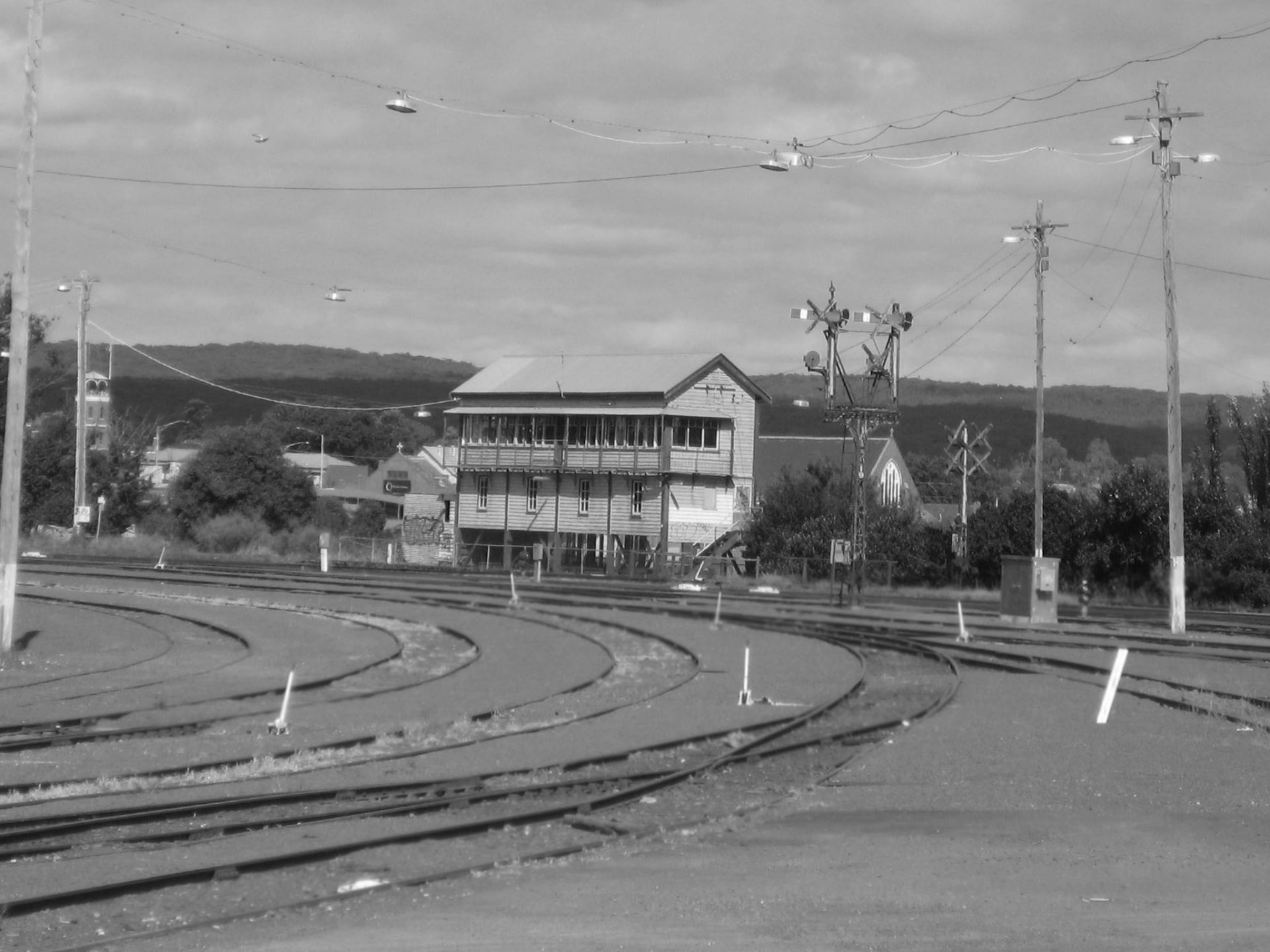Palma Rosa
Dorothy Wickham
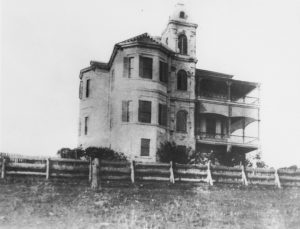
Palma Rosa State Library of Queensland
Palma Rosa a three storied Filigree Italianate mansion is located at 9 Queens Road, Brisbane, built from sandstone, with an impressive facade and fence. Not a typical ‘Queenslander’, it was originally called Sans Souci meaning “without care”. The back view of the current house comprises two three-storied bay windows, one facing towards Brisbane River, and the other looking west, and a four-storied tower facing south towards the river. The return verandah, heavy with decorative detail, faces southwards too collecting the evening breeze, and is well positioned on the site. The Queensland Heritage Register (Palma Rosa 600219) reports that Sans Souci was described as ‘one of the finest residences in or about Brisbane’. The rooms, it notes, were ‘all generously proportioned, with elaborate French polished joinery and highly decorative cornices and ceiling roses in the principal rooms. The main hallway was decorated with an arch supported by fluted columns with Corinthian capitals and had tessellated Minton tiles on the floor. Sicilian marble was used for the steps at the front door and at the porch entrance, and for most of the mantelpieces, which also had Minton tiles in the hearths’.

Andrea Stombuco State Library of Queensland
The Italian Andrea Giovanni Stombuco designed the home in 1886, the construction taking place between 1886 and 1887 by J. A. M. O’Keefe (contractor) and builders Bell and McLaughlan. A. Petrie supplied the stone (possibly Petrie’s quarry on the northern side of Crosby Road) and J. Watson the plumbing (possibly from the plumbing firm Watson Brothers).
Stombuco was born around 1820 in Florence (Firenze Toscana) Italy. He went to Cape Town, South Africa, in 1840 where he was involved in stone quarrying. He met and married Jean/Jane Frances Miles in Cape Town, Africa in 1849. She had been born in Cape Town to George Paul Montague (Hon) Miles and Catherine Helen (Mary) Murray.
Andrea and Jane emigrated to the Victorian goldfields in 1851, travelling to Bendigo where Jane was one of the few women on the fledgling goldfields. Giovanni was Andrea and Jane’s eldest son, Katherine Ellen was born in 1859 when they were at Kyneton, then Mary E was born in 1860 the same year that Katherine died. Then came Rosina Lucy and Lucia M baptised in 1863 in Melbourne, Lucia dying in 1867. By 1865 they were living at Johnston Street, Fitzroy, Melbourne where on the night of 29th August a cocoa fibre doormat, 30 inches by 12 inches with a red border and a little worn, was stolen. (Vic Police Gazette 1865) By the time George Paul Stombuco was born in 1867 they were again living at Kyneton.
Andrea was a man of many talents, describing himself as an artist, sculptor, architect, quarryman, monumental mason, builder, and publican. He is renowned for his work on a number of Catholic Churches in Victoria and undertook most of the stonework on St Patrick’s Cathedral, Ballarat. In Kyneton he designed and built St Mary’s (very like a later design of St Patrick’s in Fortitude Valley, Brisbane). Then the family travelled to Goulburn, New South Wales where he assisted in the design and construction of Sts Peter and Paul Cathedral.
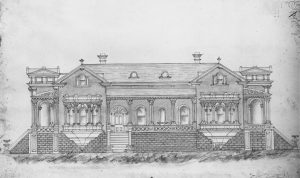
Stombuco Design State Library of Queensland
Another link to Ballarat, Victoria and Stombuco is that of Reverend Patrick Dunne, one of the first priests at St Alipius, Ballarat. Dunne encouraged Stombuco to move to Queensland. The Stombuco family arrived in Brisbane, Queensland in 1875 via Kyneton, Victoria and Goulburn NSW. James O’Quinn the Bishop of Brisbane commissioned Stombuco to design a number of important buildings, such as St Mary’s Presbytery in Ipswich, after which Stombuco applied for the licence for the Royal Oak Hotel on 20 June 1877. At this time he was married and had three children.
I, Andrew Stombuco, Architect now residing at Leichhardt Street in the City of Brisbane do hereby give notice that it is my intention to apply at the next Monthly Licensing Meeting or Special Petty Sessions, to be holden for this district on the 10th day of July next ensuing for a PUBLICAN’S LICENCE for the sale of fermented and spiritous liquor, in the house and appurtenances thereunto belonging situated at Leichhardt Street in the City of Brisbane and containing the requisite accommodation as required by the Licensed Publicans Act. The house is the property of John Brodie, is at present occupied by me and is not now licensed, and which I intend to keep as an Inn or Public house, as the “Royal Oak”. I am married and have three children. I have never held a license.
Given under my hand this 20th day of June 1877. (The Brisbane Courier)
Andrea remained at the hotel for around two years, and by 1886 was designing St Joseph’s College in Nudgee with his eldest son, Giovanni who was in partnership with him. Stombuco designed over 50 buildings in Australia 20 of which survive in South East Queensland. Among these are Palma Rosa at Hamilton, St Patrick’s Catholic Church at Fortitude Valley and the All Hallow’s School’s main building. Among his other designs are St Joseph’s College on Gregory Terryace, residences Bertholme and Briar House at New Farm, and Petrie Mansions on Petrie Terrace. There was also Friedenthal at Eagle Farm for W. H. Heckelman and Rhyndarra at Yeronga for W. Williams.
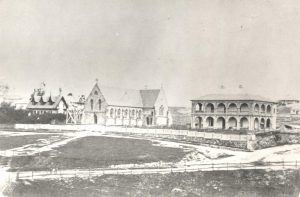
St Mary’s Catholic Church, Ipswich 1872
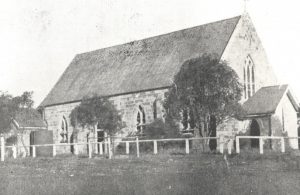
St Francis Xavier’s Catholic Church, Goodna
When the great depression hit in the 1890s Stombuco left Brisbane and went to Perth where his health declined and he died in Fremantle in 1907. His wife and children remained in Brisbane. Jane became the postmistress at Eight Mile Plains. She passed away in 1916.
Palma Rosa is a magnificent building that has stood the test of time. In 1886 the land comprised 3 roods 19.2 perches. After Stombuco left for Western Australia in 1890. Palmarosa (as it was then spelt) was rented by Lewis Flegeltaub until 1891. Civil engineer Arthur Cecil Hunter Palmer and his wife occupied the house from about 1904 to 1934. Here they had parties on their verandah on race days, as it overlooked Albion Park Racecourse. United States military personnel occupied the house from 1942-1945 during WWII. It was converted into a boarding house in 1951, then in the late 1950s was converted to a private convalescence hostital. Around this time the spelling reverted to Palma Rosa. The English Speaking Union (ESU) acquired it in 1972 using it as a club rooms and art gallery.
In 2010 Palma Rosa sold for $3,715,000 and once again it functions as a private residence.
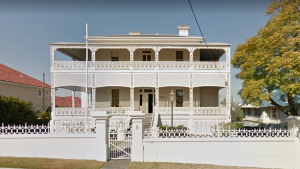
Photo credit: Shiftchange
Wikipmedia/Commons

